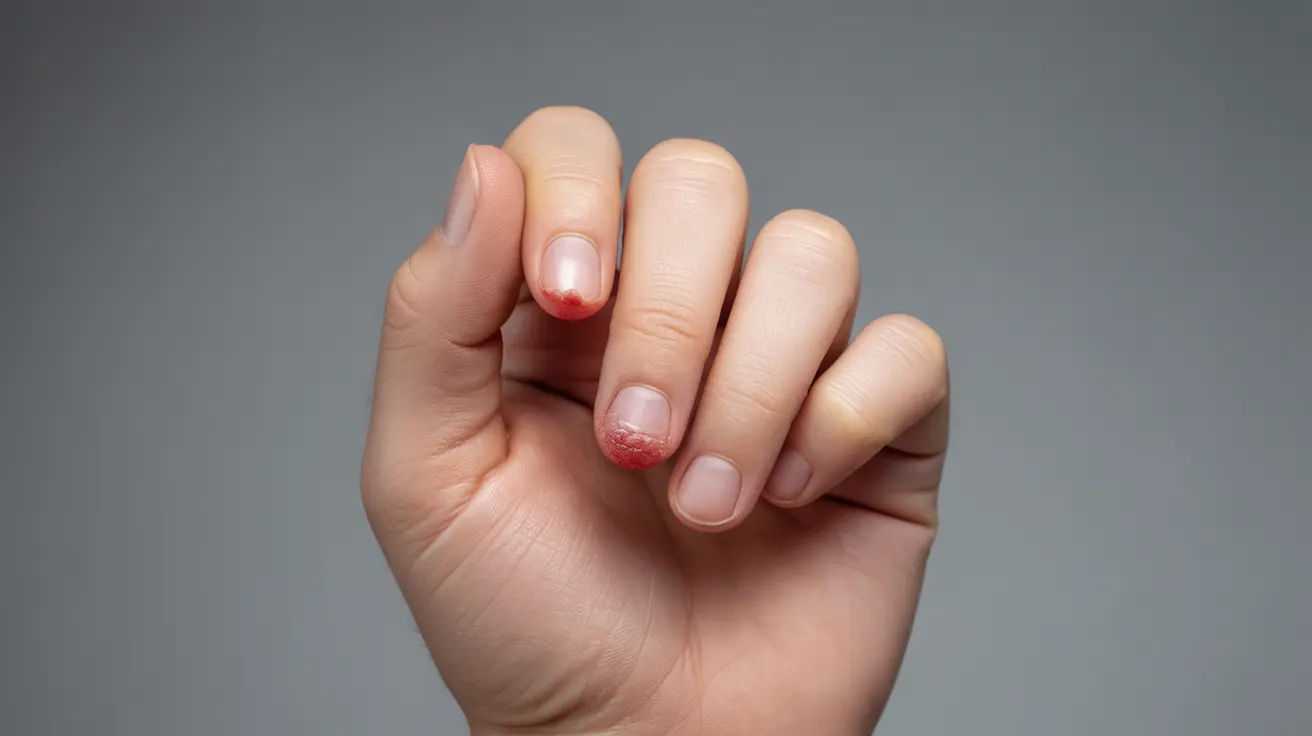Experiencing pain on the side of your fingernail when pressed can be both uncomfortable and concerning. This common condition can stem from various causes, ranging from minor injuries to infections. Understanding the underlying causes and available treatments is crucial for maintaining proper nail health and preventing complications.
In this comprehensive guide, we'll explore the reasons behind fingernail pain, effective treatment options, and preventive measures to keep your nails healthy.
Common Causes of Fingernail Pain
Several conditions can lead to pain when the side of your fingernail is pressed:
Paronychia
This bacterial or fungal infection affects the tissue around the nail, causing redness, swelling, and tenderness. It commonly occurs when the nail barrier is compromised through injury or excessive moisture exposure.
Ingrown Fingernails
When the nail's edge grows into the surrounding skin, it can cause significant pain and inflammation. This condition often results from improper nail trimming or injury.
Trauma or Injury
Direct impact, crushing injuries, or repetitive pressure can cause pain around the nail. Even minor trauma can lead to significant discomfort when the area is pressed.
Treatment Options for Painful Fingernails
Home Remedies
For mild cases, several home treatments can provide relief:
- Warm water soaks (3-4 times daily for 15 minutes)
- Keeping the affected area clean and dry
- Over-the-counter antibiotic ointment application
- Gentle massage of the affected area to promote drainage
Medical Treatment
Professional medical attention may be necessary for more severe cases, particularly when infection is present. Treatment might include:
- Prescription antibiotics (oral or topical)
- Professional drainage of infected areas
- Partial or complete nail removal in severe cases
- Anti-fungal medications if fungal infection is present
Prevention Strategies
To minimize the risk of developing painful fingernail conditions:
- Trim nails straight across, avoiding curved edges
- Wear protective gloves when hands are exposed to water for extended periods
- Keep nails clean and dry
- Avoid biting or picking at nails and surrounding skin
- Use moisturizer to prevent skin cracking around nails
When to Seek Medical Care
Contact a healthcare provider if you experience:
- Severe pain that interferes with daily activities
- Signs of infection (redness, warmth, pus)
- Fever or spreading redness
- Symptoms that worsen or don't improve with home treatment
Frequently Asked Questions
What are the common causes of pain on the side of a fingernail when pressed?
The most common causes include paronychia (infection of the nail fold), ingrown fingernails, trauma or injury to the nail area, and fungal infections. These conditions can create inflammation and tenderness, making the area painful when pressed.
How can I treat pain and swelling caused by an ingrown fingernail or nail infection at home?
Home treatment options include warm water soaks, keeping the area clean and dry, applying over-the-counter antibiotic ointment, and wearing properly fitting gloves during wet work. Avoiding pressure on the affected area and maintaining good nail hygiene are also essential.
When should I see a doctor for pain or infection around my fingernail?
Seek medical attention if you experience severe pain, signs of infection (redness, warmth, pus), fever, or if symptoms worsen or don't improve with home treatment within a few days. Professional care is also necessary if the condition interferes with daily activities.
What are the symptoms that indicate a nail infection like paronychia or a fungal infection?
Key symptoms include redness, swelling, tenderness, warmth around the nail, pus or discharge, changes in nail color or texture, and pain when pressed. Fungal infections may also cause nail thickening or discoloration.
How can I prevent pain and infections around my fingernails, especially if my hands are frequently wet?
Prevent nail problems by wearing protective gloves during wet work, maintaining proper nail hygiene, trimming nails correctly, avoiding nail biting or picking, and keeping hands and nails moisturized. Regular hand drying and proper nail care are essential for prevention.




